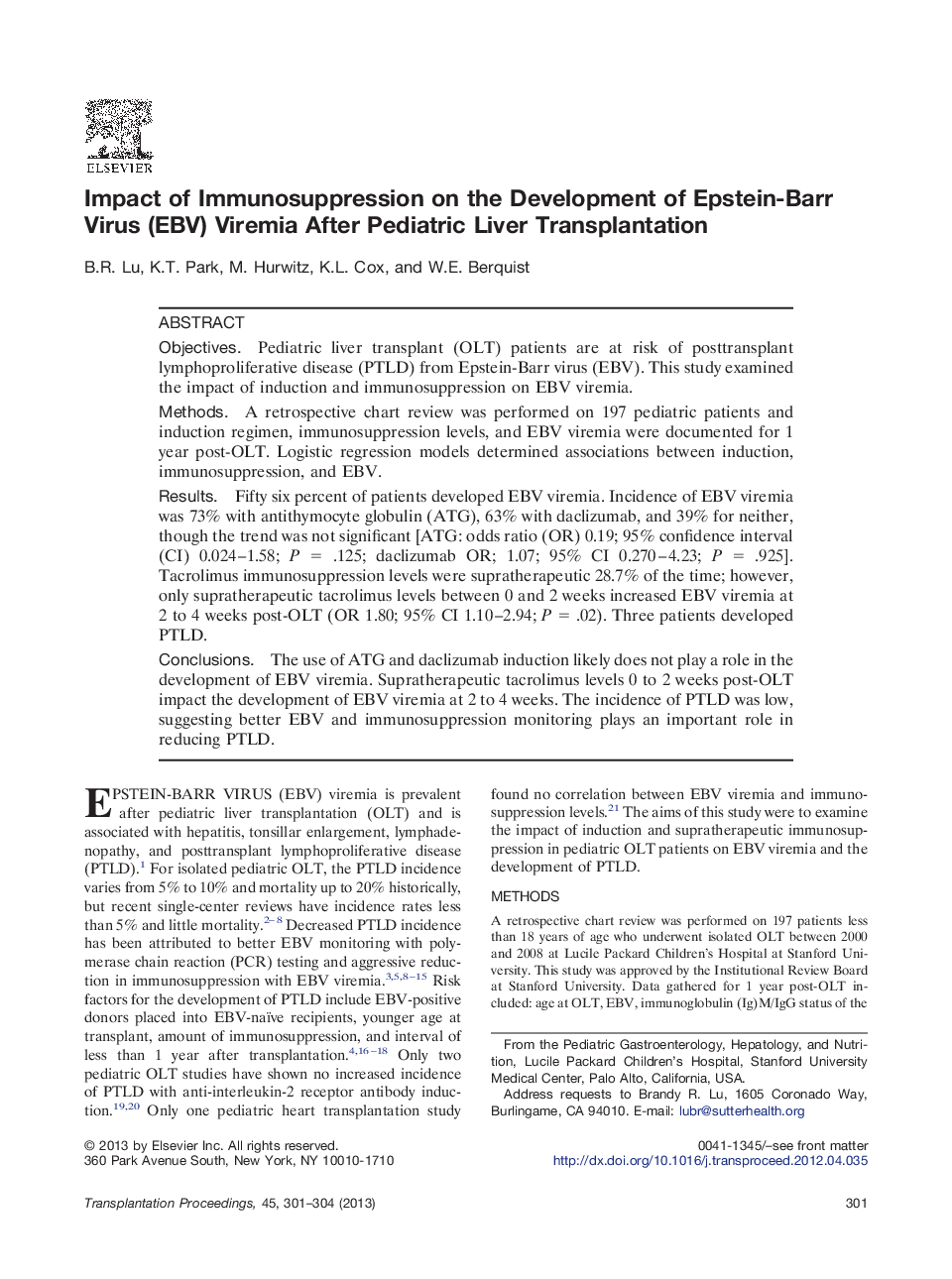| Article ID | Journal | Published Year | Pages | File Type |
|---|---|---|---|---|
| 4257113 | Transplantation Proceedings | 2013 | 4 Pages |
ObjectivesPediatric liver transplant (OLT) patients are at risk of posttransplant lymphoproliferative disease (PTLD) from Epstein-Barr virus (EBV). This study examined the impact of induction and immunosuppression on EBV viremia.MethodsA retrospective chart review was performed on 197 pediatric patients and induction regimen, immunosuppression levels, and EBV viremia were documented for 1 year post-OLT. Logistic regression models determined associations between induction, immunosuppression, and EBV.ResultsFifty six percent of patients developed EBV viremia. Incidence of EBV viremia was 73% with antithymocyte globulin (ATG), 63% with daclizumab, and 39% for neither, though the trend was not significant [ATG: odds ratio (OR) 0.19; 95% confidence interval (CI) 0.024–1.58; P = .125; daclizumab OR; 1.07; 95% CI 0.270–4.23; P = .925]. Tacrolimus immunosuppression levels were supratherapeutic 28.7% of the time; however, only supratherapeutic tacrolimus levels between 0 and 2 weeks increased EBV viremia at 2 to 4 weeks post-OLT (OR 1.80; 95% CI 1.10–2.94; P = .02). Three patients developed PTLD.ConclusionsThe use of ATG and daclizumab induction likely does not play a role in the development of EBV viremia. Supratherapeutic tacrolimus levels 0 to 2 weeks post-OLT impact the development of EBV viremia at 2 to 4 weeks. The incidence of PTLD was low, suggesting better EBV and immunosuppression monitoring plays an important role in reducing PTLD.
